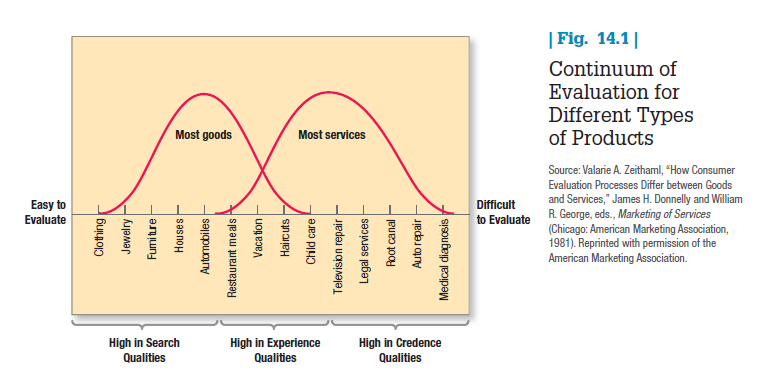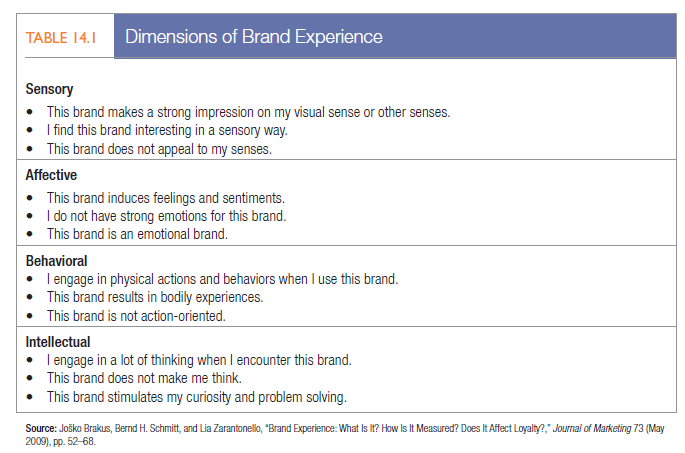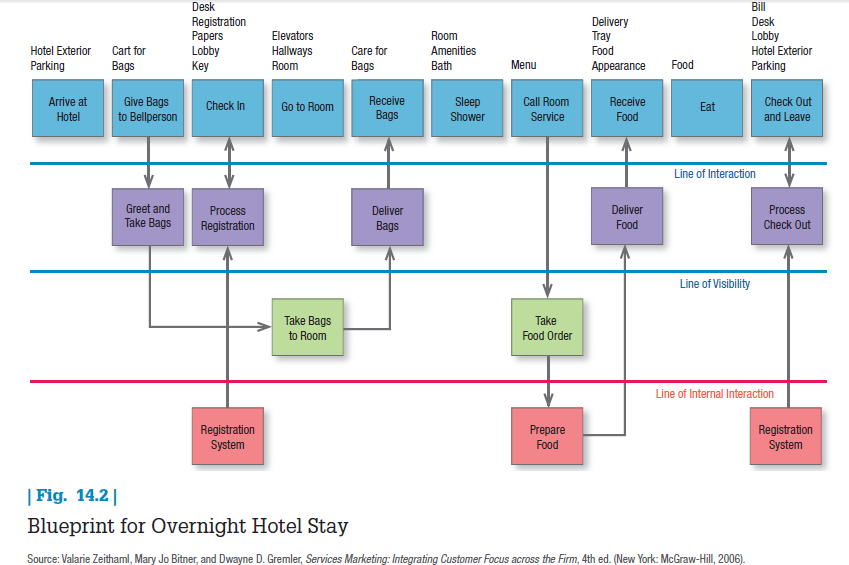The Bureau of Labor Statistics reports that the service-producing sector will continue to be the dominant employment generator in the future economy, adding about 18 million jobs between 2010 and 2018, or about 88 percent of the expected increase in total employment. By 2020, the goods-producing sector is expected to account for 11.9 percent of total jobs, down from 12.4 percent in 2010 and 16.8 percent in 2000. Manufacturing lost a staggering 5.7 million jobs from 2000 through 2010.3 These numbers and others have led to a growing interest in the unique opportunities of marketing services.4
1. SERVICE INDUSTRIES ARE EVERYWHERE
The government sector, with its courts, employment services, hospitals, loan agencies, military services, police and fire departments, postal service, regulatory agencies, and schools, is in the service business. The private nonprofit sector—museums, charities, churches, colleges, foundations, and hospitals—is in the service business. A good part of the business sector, with its airlines, banks, hotels, insurance companies, law firms, management consulting firms, medical practices, motion picture companies, plumbing repair companies, and real estate firms, is in the service business. Many workers in the manufacturing sector, such as computer operators, accountants, and legal staff, are really service providers. In fact, they make up a “service factory” providing services to the “goods factory.” And those in the retail sector, such as cashiers, clerks, salespeople, and customer service representatives, are also providing a service.
A service is any act or performance one party can offer to another that is essentially intangible and does not result in the ownership of anything. Its production may or may not be tied to a physical product. Increasingly, manufacturers, distributors, and retailers are providing value-added services, or simply excellent customer service, to differentiate themselves. Many pure service firms are now using the Internet to reach customers; some operate purely online.
2. CATEGORIES OF SERVICE MIX
The service component can be a minor or a major part of the total offering. We distinguish five categories of offerings:
- A pure tangible good such as soap, toothpaste, or salt with no accompanying services.
- A tangible good with accompanying services, like a car, computer, or cell phone, with a warranty or specialized customer service contract. Typically, the more technologically advanced the product, the greater the need for high-quality supporting services.
- A hybrid offering, like a restaurant meal, of equal parts goods and services. People patronize restaurants for both the food and its preparation.
- A major service with accompanying minor goods and services, like air travel with supporting goods such as snacks and drinks. This offering requires a capital-intensive good—an airplane—for its realization, but the primary item is a service.
- A pure service, primarily an intangible service, such as babysitting, psychotherapy, or massage.
Restaurants are good examples of hybrid offerings combining products and services. One of the more successful restaurant brands is Panera Bread.5
PANERA BREAD Founded by Ron Shaich as a Boston bakery called the Cookie Jar in 1980, Panera Bread has emerged over time as a leader, with Chipotle, in the “fast casual” restaurant category. Panera combines the speed and convenience of fast food with the quality and menu variety of waiter-service dining. The chain targets “food people who understand and respond to food or those on the verge of that” by selling fresh “real” food at full prices customers are more than willing to pay. An unpretentious atmosphere—no table service, but no time limit—encourages customers to linger. The brand is seen as family-oriented but also sophisticated, offering fresh-baked artisan bread and a full menu of healthy, good-tasting sandwiches, salads, soups, and breakfast foods. Panera has innovated in a number of different ways, infusing a strong social conscience in much that it does. With the slogan “Live Consciously. Eat Deliciously,” CMO Michael Simon leads a number of social and community initiatives such as the Panera Bread Foundation, collaborations with Feeding America, and donations to local hunger relief agencies and charities. The company has opened five “pay-what-you-can” Panera Cares stores. In other marketing areas, it has boosted its digital spend and boasts a loyalty program with 14 million members, accounting for almost half its transactions.
The range of service offerings makes it difficult to generalize without a few further distinctions.
- Services are equipment-based (automated car washes, vending machines) or people-based (window washing, accounting services). People-based services vary by whether unskilled, skilled, or professional workers provide them.
- Service companies can choose among different processes to deliver their service. Restaurants offer cafeteria- style, fast-food, buffet, and candlelight service formats.
- Some services need the client’s presence. Brain surgery requires the client’s presence; a car repair does not. If the client must be present, the service provider must be considerate of his or her needs. Thus beauty salon operators will invest in decor, play background music, and engage in light conversation with the client.
- Services may meet a personal need (personal services) or a business need (business services). Service providers typically develop different marketing programs for these markets.
- Service providers differ in their objectives (profit or nonprofit) and ownership (private or public). These two characteristics, when crossed, produce four quite different types of organizations. The marketing programs of a private investor hospital will differ from those of a private charity hospital or a Veterans Administration hospital.
Customers typically cannot judge the technical quality of some services even after they have received them. Figure 14.1 shows various products and services according to difficulty of evaluation.6 At the left are goods high in search qualities—that is, characteristics the buyer can evaluate before purchase. In the middle are goods and services high in experience qualities—characteristics the buyer can evaluate after purchase. At the right are goods and services high in credence qualities—characteristics the buyer normally finds hard to evaluate even after consumption.7
Because services are generally high in experience and credence qualities, there is more risk in their purchase, with several consequences. First, service consumers generally rely on word of mouth rather than advertising. Second, they rely heavily on price, provider, and physical cues to judge quality. Third, they are highly loyal to service providers who satisfy them. Fourth, because switching costs are high, consumer inertia can make it challenging to entice business away from a competitor.
Although customer loyalty can be strong with services, in today’s modern communications environment, a service failure can be a PR nightmare and undermine that loyalty, as Carnival Cruises found.8

CARNIVAL The Carnival Triumph was on the third day of a four-day cruise from Galveston, Texas, to Mexico when an engine room fire set the boat adrift and disabled, leaving 3,100 passengers with little access to food, water, and toilets. Waste spilled into the hallways, and decks below became insufferably hot. When the boat returned to shore after a long five days, the CEO greeted passengers as they disembarked, given them each $500, a free flight home, a refund for the trip, and credit for another cruise. Nevertheless, given the publicity surrounding what the media called the “poop cruise,” the damage had been done. Public opinion of cruises as a whole dropped. Carnival found its bookings declining by a hefty 20 percent, forcing the company to pass along steep discounts to fill boats. To avoid future problems, the cruise line invested $600 million to upgrade its fleet and hired a new VP of Technical Operations to oversee its safety initiatives.
3. DISTINCTIVE CHARACTERISTICS OF SERVICES
Four distinctive service characteristics greatly affect the design of marketing programs: intangibility, inseparability, variability, and perishability.9
INTANGIBILITY Unlike physical products, services cannot be seen, tasted, felt, heard, or smelled before they are bought. A person getting cosmetic surgery cannot see the results before the purchase, and the patient in the psychiatrist’s office cannot know the exact outcome of treatment. To reduce uncertainty, buyers will look for evidence of quality by drawing inferences from the place, people, equipment, communication material, symbols, and price. Therefore, the service provider’s task is to “manage the evidence” to “tangibilize the intangible”10
Service companies can try to demonstrate their service quality through physical evidence and presentation.11 Suppose a supermarket wants to position itself as the “fast” supermarket. It could make this positioning strategy tangible through any number of marketing tools:
- Place—The layout of the checkout area and the traffic flow should be planned carefully. Waiting lines should not get overly long.
- People—Checkout staff should be busy, but there should be a sufficient number to manage the workload.
- Equipment—UPC scanners, credit card readers, and electronic registers should all be state of the art.
- Communication material—signage and brochures—text and photos—should suggest efficiency and speed.
- Symbols—The supermarket’s name and symbol could suggest fast service, for instance, “Speedy Shop”
- Price—The supermarket could advertise a $10 rebate if customers have to wait in line more than five minutes.
Disney is a master at “tangibilizing the intangible” and creating magical fantasies in its theme parks; so are retailers such as Toys “R” Us and Bass Pro Shops.12 Table 14.1 measures brand experiences along sensory, affective, behavioral, and intellectual dimensions. Applications to services are clear.

Because there is no physical product, the service provider’s facilities—its primary and secondary signage, environmental design and reception area, employee apparel, collateral material, and so on—are especially important. All aspects of the service delivery process can be branded, which is why Allied Van Lines is concerned about the appearance of its drivers and laborers, why UPS has developed such strong equity with its brown trucks, and why Doubletree by Hilton hotels offers fresh-baked chocolate chip cookies to symbolize care and friendliness.
Service providers often choose brand elements—logos, symbols, characters, and slogans—to make the service and its key benefits more tangible—for example, the “friendly skies” of United, the “good hands” of Allstate, and the “bullish” nature of Merrill Lynch.
INSEPARABILITY Whereas physical goods are manufactured, then inventoried, then distributed, and later consumed, services are typically produced and consumed simultaneously.13 A haircut can’t be stored— or produced without the barber. The provider is part of the service. Because the client is also often present, provider-client interaction is a special feature of services marketing. Buyers of entertainment and professional services are very interested in the specific provider. It’s not the same concert if Taylor Swift is indisposed and replaced by Beyonce or if a corporate legal defense is supplied by an intern because antitrust expert David Boies is unavailable. When clients have strong provider preferences, the provider can raise its price to ration its limited time.
Several strategies exist for getting around the limitations of inseparability. The service provider can work with larger groups. Some psychotherapists have moved from one-on-one therapy to small-group therapy to groups of more than 300 people in a large hotel ballroom. The service provider can work faster—the psychotherapist can spend 30 more efficient minutes with each patient instead of 50 less-structured minutes and thus see more patients. The service organization can train more service providers and build up client confidence, as H&R Block has done with its national network of trained tax consultants.
VARIABILITY Because the quality of services depends on who provides them, when and where, and to whom, services are highly variable. Some doctors have an excellent bedside manner; others are less empathetic. Service firms know that variability in their performance puts them at risk. Hilton initiated a major program to create more uniformity in guest experiences.14
HILTON HOTELS Between 1964 when Hilton Hotels sold its foreign licensee Hilton International Co. and 2006 when it bought it back, the two companies operated largely independently, and as a result, the Hilton brand was no longer providing customers with a uniform high- quality experience. Nomura research analyst Harry Curtis said, “The brand standards in Europe were always very different from those in the U.S. I think they were, quite frankly, a bit slacker in Europe.” Chris Nassetta, appointed CEO in 2008, initiated H360, a project to review everything from breakfast fare to bath amenities, the decor of lobbies, Wi-Fi service, hotel architecture, and handling of customer complaints at all the company’s hotels. Nassetta said, “There was a huge amount of inconsistency in the granular standards that travelers care about.” As a result of H360, independent owners of Hilton-branded hotels in the United States and abroad have been forced to upgrade to Hilton standards where necessary or be dropped from the Hilton system. Protecting the brand seems to have served the company well—by 2010, the company had the highest brand equity of nearly 40 hotel chains.
Service buyers are aware of potential variability and often talk to others or go online to collect information before selecting a specific service provider. To reassure customers, some firms offer service guarantees that may reduce consumer perceptions of risk.15 Here are three steps service firms can take to increase quality control.
- Invest in good hiring and training procedures. Recruiting the right employees and giving them excellent training are crucial, whether they are highly skilled professionals or low-skilled workers. Better-trained people exhibit six characteristics that improve service quality: competence, courtesy, credibility, reliability, responsiveness, and communication skill.
- Standardize the service-performance process throughout the organization. A service blueprint can map out the service process, the points of customer contact, and the evidence of service from the customer’s point of view.16 Figure 14.2 shows a service blueprint for an overnight guest at a hotel.17 Behind the scenes, the hotel must skillfully help the guest move from one step to the next. Service blueprints can be helpful in identifying potential “pain points” for customers, developing new services, supporting a zero-defects culture, and devising service recovery strategies.
- Monitor customer satisfaction. Employ suggestion and complaint systems, customer surveys, and third-party comparison shopping. Customer needs may vary in different areas, allowing firms to develop region-specific customer satisfaction programs.18 Firms can also develop customer information databases and systems for more personalized service, especially online.19
Service firms can also design marketing communication and information programs so consumers learn more about the brand than what their subjective experience alone tells them.
PERISHABILITY Services cannot be stored, so their perishability can be a problem when demand fluctuates. To accommodate rush-hour demand, public transportation companies must own more equipment than if demand was even throughout the day. Some doctors charge patients for missed appointments because the service value (the doctor’s availability) exists only at the time of the appointment.
Demand or yield management is critical—the right services must be available to the right customers at the right places at the right times and right prices to maximize profitability. Several strategies can produce a better match between service demand and supply.20 On the demand (customer) side:

- Complementary services can provide alternatives to waiting customers, such as cocktail lounges in restaurants and automated teller machines in banks.
- Reservation systems are a way to manage the demand level. Airlines, hotels, and physicians employ them extensively.
On the supply side:
- Part-time employees can serve peak demand. Colleges add part-time teachers when enrollment goes up; stores hire extra clerks during holiday periods.
- Peak-time efficiency routines can allow employees to perform only essential tasks during peak periods. Paramedics assist physicians during busy periods.
- Increased consumer participation frees service providers’ time. Consumers fill out their own medical records or bag their own groceries.
- Shared services can improve offerings. Several hospitals can share medical-equipment purchases.
- Facilities for future expansion can be a good investment. An amusement park might buy surrounding land for later development.
For fast-food chains, drive-through windows are a way to expand selling opportunities beyond sit-down meals. An impressive 70 percent of revenue for the fast-food industry comes via drive-through windows. According to QSR magazine, Taco Bell operates some of the fastest and most accurate drive-through windows. The company aims for 3 minutes and 30 seconds per order and is constantly looking at ways to shave seconds and cut costs.
Source: Kotler Philip T., Keller Kevin Lane (2015), Marketing Management, Pearson; 15th Edition.

Hello, i feel that i noticed you visited my weblog thus i got here to “go back the choose”.I’m trying to find things to improve my website!I assume its adequate to use some of your ideas!!